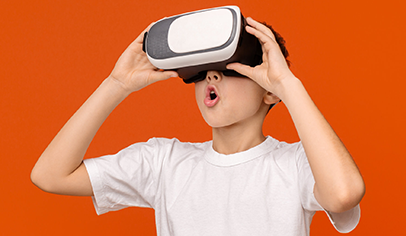What is the Metaverse—and should you be concerned?
What do you call an all-encompassing online world your children can travel to virtually? The metaverse.
June 21, 2022

milkos/123rf
You’re trying to raise your child to be the best person they can be, to live and thrive in this world, to be happy and successful, and more. It is challenging, no less. However, adding to that challenge is raising your child and protecting them in this world—and in the metaverse.
What is the Metaverse?
Maybe you heard of the metaverse because you heard Facebook changed its parent company name to Meta as a pledge to help “bring the metaverse to life.” Maybe you heard of the metaverse from Neil Stephenson’s science fiction novel Snow Crash, which coined the term. Or, maybe you heard of it from the growing popularity of the Oculus and other virtual reality technologies, allowing users to experience the metaverse for themselves. Or, maybe you haven’t heard of it. Whatever your knowledge of this new space is or isn’t, the metaverse is here.
According to the Associated Press (AP), the metaverse is an “immersive, all-encompassing online world where people can gather virtually for a range of activities.” It is a network of virtual worlds that incorporates technologies such as virtual reality and augmented reality. People create and use online avatars to travel to virtual settings to play games, communicate with and meet others, work, shop, and more.
How do you get there?
There is no “one way” to log into the metaverse, as there are different worlds in this “metaverse.” You can use a phone or a laptop, or you can purchase virtual or augmented reality technologies to immerse and interact in this world even more.
What are the advantages and disadvantages of this new world?
The metaverse is immersive, which makes the user experience unique, engaging and fun. However, the more stimulating technology is, the harder it is to disconnect from it. This highlights the fact that there are several advantages and disadvantages to the metaverse.
The potential benefits for kids and teens from the metaverse range from creative play and socialization to immersive learning and even medical treatment.
Post-pandemic, we are seeing the social-emotional effects on children firsthand. Add to that, a lot of kids have trouble finding connection in real life. The metaverse creates a space for these kids to grow their social skills, find friends and connect—which is huge for generation Z and Alpha.
Virtual and augmented reality can also heighten learning retention. Pilots, drivers, the military, and other professionals have used simulation trainings for years. Beyond this learning retention, learning can be extremely immersive and the possibilities are endless: virtual, self-directed field trips, STEM skills, etc.
Medical research has gauged treatment benefits using virtual and augmented reality for years. Treatments for anxiety and phobias in adults and adolescents use virtual or augmented environments already. New treatments using these technologies include helping teens learn to regulate their emotions, autism therapy using virtual reality devices, and aiding children undergoing medical procedures by distracting them with these devices.
While the harms are not yet fully understood, they are there. How will it affect the physical and mental well-being of children? What are the privacy regulations of these still new and, for the most part, unregulated digital worlds?
Virtual reality headsets for children create concerns—viewing inappropriate content or social contacts, eye fatigue or nausea, moving around and running into walls or other real-world objects while exploring virtual space, or forming false memories from virtual environments. Children could also isolate real social time for virtual social time, and while there are benefits to the social interactions in the metaverse, cyberbullying still exists and the metaverse gives it even more consistency and leverage to the real world.
How do you keep kids safe?
As with any technology, balance is key. Taking breaks, opting out, and setting time limits is vital. Parents should monitor and regulate their children’s usage and interaction.
In addition, not every app or world in the metaverse is appropriate for children. Both Minecraft and Roblox were designed for children. Roblox offers specific safety features for children under the age of 13, such as chat filters or the ability to turn off chat. Other platforms are exploring child safety protections for younger children. However, parent controls are still a work in progress. Parents should learn about the metaverse and the worlds that exist in it, and they should have a basic understanding and comfort to set guardrails.
Above all, communicating about it and staying involved is the best way parents can keep kids safe in this new world.
Get your child's exact back‑to‑school supply list, right from their teacher.



